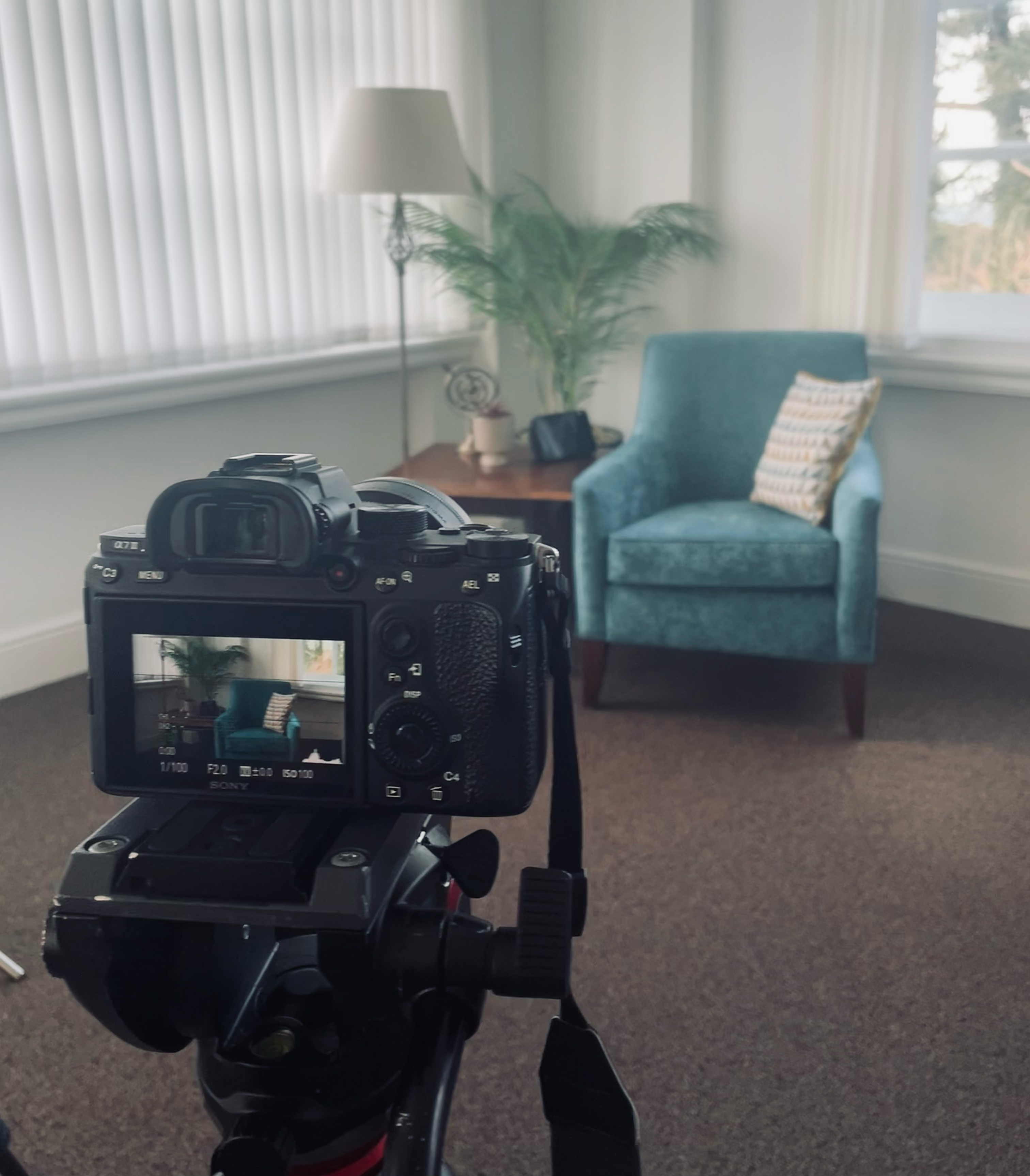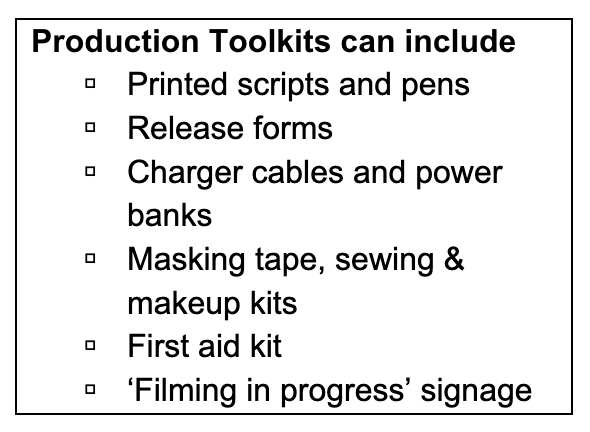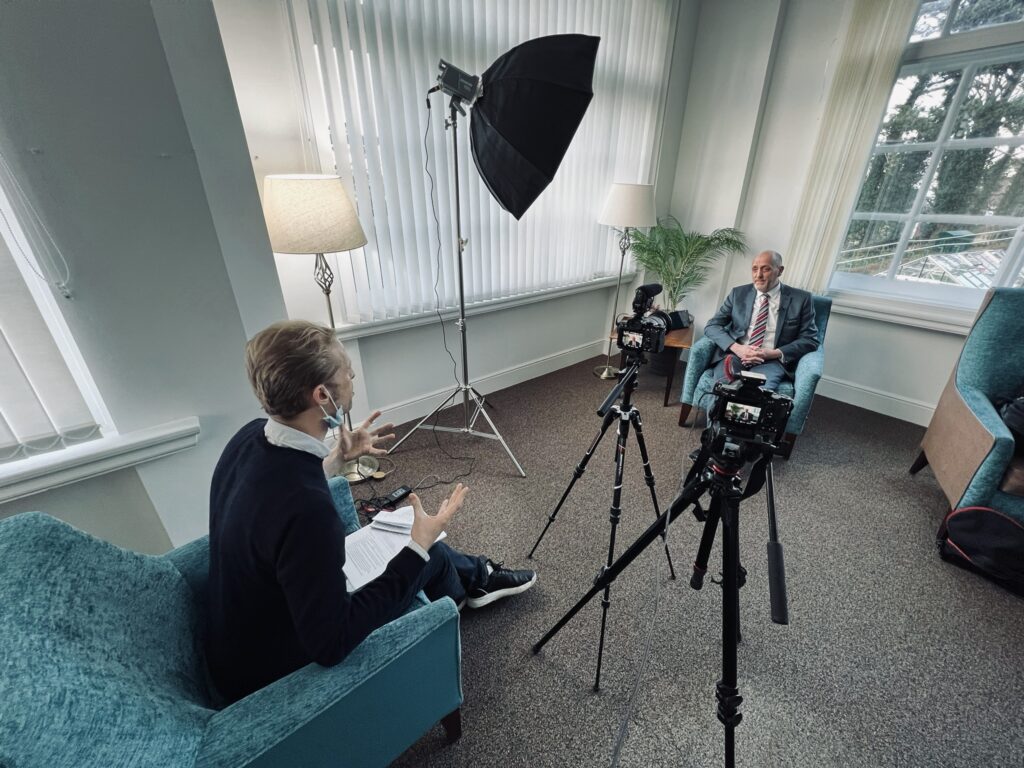
Anyone who’s been behind the scenes in film & TV knows how complex productions can be – the sheer scope of equipment and crew. We are entertained by video every day, and at Thinking Hat, we know that video content is an essential part of PR, marketing and social media strategies. But we also know that creating quality video content doesn’t always require a huge crew.
There are three phases of production to think about – pre-production, production, and post-production. From developing a successful concept, sourcing a great crew and keeping a cap on the budget, by considering these phases before you begin, you can be sure you’re going in feeling prepared, and with confidence to produce an engaging video for your campaign, website, or social media.
Technical aspects like equipment types, filming ratios and more need their own screen time, and with that in mind, whether you’re a marketer, producer or other communications professional who’s already working with amazing videographers, here’s a checklist that will guarantee you produce epic content for video.
What to think about before you start:
Great video storytelling doesn’t just happen by magic on the day. Producers plan and prepare carefully days or even weeks in advance to ensure everything goes smoothly on the day. Here’s are the steps I like to think about before shooting day arrives.
- Creating a video brief and writing the script
The brief is your one-pager bible detailing exactly what you will aim to produce on the day. Usually this includes a description of what you want the video to look like, including; a basic synopsis of the plot, your desired video length, and an outline of the key content and messages you need to land. You can then start working on a set of interview questions designed to capture those key points.
Make sure you also gather a list of shots you want to get to add context to your video, such as close-ups of the location or venue, or a shot of a product being used if this is a promotional shoot.
If you haven’t already, now would be a good time to make sure you’ve liaised with your speakers, talent and any venue managers or contacts at your shooting location!
- Booking your crew
While working on your script, you’ll also want to start getting your crew booked – usually a videographer with camera gear and lighting. The size of your crew will be determined by the scope of your production, but you will be surprised how much can be achieved with just a content producer and a skilled videographer. By discussing your project scope with your technical team, you can be sure you’re using the most appropriate equipment for your project (and budget)!
- What to think about before the shoot

By now you’ll have everything lined up for your shoot day; location, speakers, approved scripts, and crew. Always keep in touch with the concerned parties before the big day.
By creating a simple ‘call sheet’ (see below) and sending it to your venue manager and production team a day before, you can arrive on the day with confidence – knowing your guest speakers are ready, that your crew knows where to be, and that you have a location contact who will get you set up for the day.
Now get a good night’s sleep to make sure you arrive on time!
What to consider on the day of your shoot:
- Get to your location early
Having already determined your project scope, you will know how many cameras are in your setup and how best to shoot in your location, and now that the big day has arrived, the fun can begin! You might need an induction, or hopefully can get straight to work by briefing your team about the day ahead.
- Brief your team
Ensure everyone is aware of their roles and responsibilities – as a content producer, you will be responsible for interviewing your speakers and coordinating all participants who will appear on video.
Talk them through the process and make them feel comfortable with what they’re going to say and do. Your videographer will often capture establishing shots of your location while you work with your guest speakers, briefing them, and doing a dry run of the interview if time allows. But be careful, you don’t want to have a great conversation before the real thing! And don’t forget to have them sign a release form for their involvement.
- Lights, camera, action!
If you have multiple speakers, be sure to allow some time to let your talent get to know each other. The more comfortable they are, the more natural your content will be.

After that, time is money, so get to shooting! A good rule of thumb is ‘more content means more flexibility in edit’, but be cautious not to overshoot and give yourself too much content to work with in post-production. Stick to the script, it’s why you wrote it in the first place!
Throughout the recording process, the producer notes any great sound bites, listens for errors, mispronunciations, or dropped words, and might ask to do it again, or ‘just one more from the top’ to ensure quality pieces of content are captured.

Before ‘that’s a wrap’ can be called, make sure you’ve captured everything in your script, and always keep an eye out for anything you might want to include that you didn’t expect – for example, maybe the talent wore an amazing pair of shoes that you want to make sure are included in the final cut! In some cases, you might want to capture some additional material or behind-the-scenes content that can be shared on social (like we do for our Instagram).
Post-Production Tips: Things to think about post-filming
- Wrangle your data
After a successful day on set, it’s time to start editing. It’s important to make sure your editor has everything they need before they begin. While your videographer will manage file transfers and organising the captured footage according to the script, the producer needs to ensure editors have the appropriate brand guidelines, including logos and fonts, and well as music options that gives them what they need to create an engaging and dynamic edit.
- Editing your video
This is where the magic begins. If you’ve captured everything, this part should be the easy bit – but don’t worry if you haven’t, you can always find a workaround! The producer and videographer should still be working closely at this point, in regular communication about the state of the edit, what needs changing, and what resolves can be offered for any challenges that might arise.
- Delivering a great video asset
The length of the post-production process depends on the amount and quality of the content captured. Poor lighting, sound and subject delivery can make your task a lot trickier than it needs to be.
To tell a great story through edit, you will want to edit to music and ensure sound is synced to what’s happening on screen. You’ll also want to use a variety of shot sizes and lengths to create a captivating pace that keeps your audience engaged. By now, you’re seeing the results of your hard work and are that much closer to sharing a version with your client.
Every project is different in scope, and every video will include slightly different processes to what we’ve outlined above. Often this may also depend on your client’s wishes. But, by using these steps, and making sure you liaise with your technical team throughout the three phases, you can be sure you’re on track to deliver quality video work.
See some of the video projects we’ve produced for clients, or get in touch to see how we can help you with your video needs.

